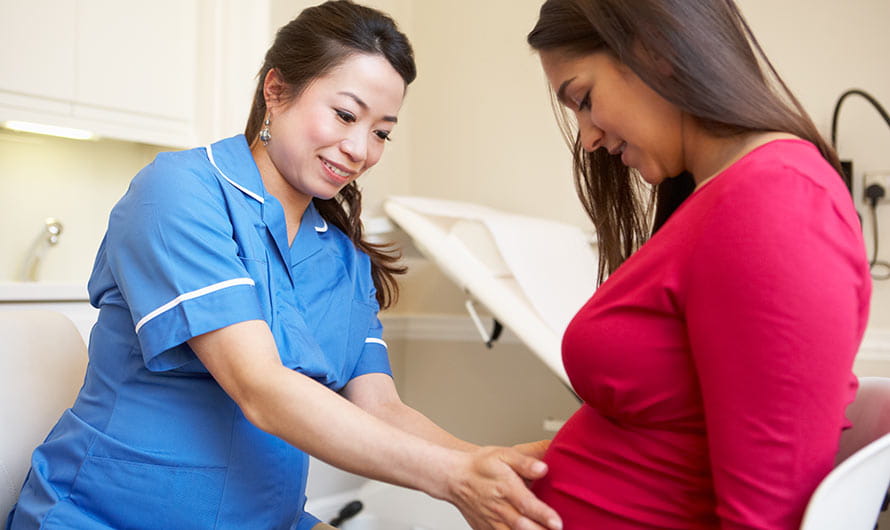Blood Pressure and Pregnancy

Having healthy blood pressure is important for everyone. Blood pressure is one of the key health factors that determine your risk for heart disease and stroke.
During pregnancy, a healthy blood pressure is less than 140/90 mm Hg.
Postpartum, a healthy blood pressure is less than 120/80 mm Hg.
Know your numbers and talk to your health care professional about managing your blood pressure before, during and after pregnancy.
Types of High Blood Pressure During Pregnancy
Chronic hypertension is high blood pressure that is diagnosed before pregnancy or up to 20 weeks during pregnancy.
Gestational hypertension is high blood pressure that develops after 20 weeks of pregnancy.
Preeclampsia is high blood pressure during pregnancy plus additional health indicators like protein in the urine.
Eclampsia is a severe complication of preeclampsia that causes seizures.
HELLP syndrome stands for Hemolysis Elevated liver enzymes Low platelet count and is a serious complication of preeclampsia.
Blood Pressure During Pregnancy
Pregnancy puts extra strain on your body – and your heart. A healthy blood pressure during pregnancy is important for you and your baby.
During pregnancy, blood pressure ranges are different. The chart below shows what your numbers mean while you’re pregnant and around delivery, and when to get care.
Blood Pressure Categories During Pregnancy
| BLOOD PRESSURE CATEGORY | SYSTOLIC mm Hg (top/upper number) | and/or | DIASTOLIC mm Hg (bottom/lower number) |
|---|---|---|---|
| NON-HYPERTENSIVE | LESS THAN 140 | and | LESS THAN 90 |
| HYPERTENSION IN PREGNANCY* | 140 OR HIGHER | or | 90 or higher |
| SEVERE HYPERTENSION* (If you don’t have symptoms, call your health care professional immediately) |
160 OR HIGHER | or | 110 OR HIGHER |
| * If you have any of these symptoms, call 911: severe headache, change in vision, abdominal pain, chest pain, significant swelling, or shortness of breath | |||
The risk of high blood pressure doesn’t go away after birth. High blood pressure can happen up to a year postpartum.
After pregnancy, your blood pressure can change. Ask your health care team what your healthy numbers should be and how often to check at home. If you had high blood pressure during pregnancy, plan a blood pressure check in the first week after you go home (within 3–10 days). Keep a log of your readings and share them with your care team.
Standard Blood Pressure Categories
| BLOOD PRESSURE CATEGORY | SYSTOLIC mm Hg (top/upper number) | and/or | DIASTOLIC mm Hg (bottom/lower number) |
|---|---|---|---|
| NORMAL | LESS THAN 120 | and | LESS THAN 80 |
| ELEVATED | 120 – 129 | and | LESS THAN 80 |
| STAGE 1 HYPERTENSION (High Blood Pressure) | 130 – 139 | or | 80 – 89 |
| STAGE 2 HYPERTENSION (High Blood Pressure) | 140 OR HIGHER | or | 90 OR HIGHER |
| SEVERE HYPERTENSION (If you don’t have symptoms*, call your health care professional) | HIGHER THAN 180 | and/or | HIGHER THAN 120 |
| HYPERTENSIVE EMERGENCY (If you have any of these symptoms*, call 911) | HIGHER THAN 180 | and/or | HIGHER THAN 120 |
| *symptoms: chest pain, shortness of breath, back pain, numbness, weakness, change in vision, or difficulty speaking | |||
Aspirin, Blood Pressure and Pregnancy
Find a Blood Pressure Monitor Validated for Use in Pregnancy

High Blood Pressure and Women
